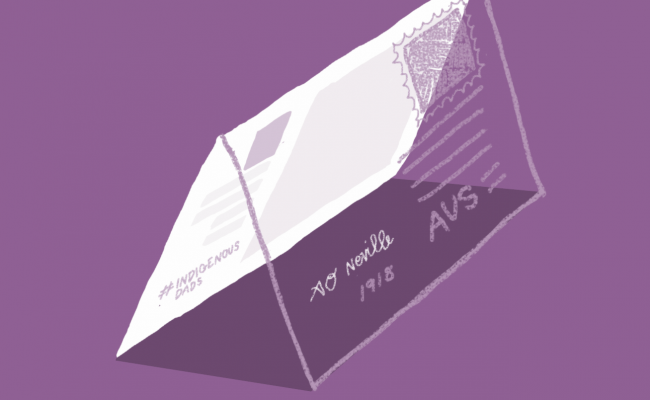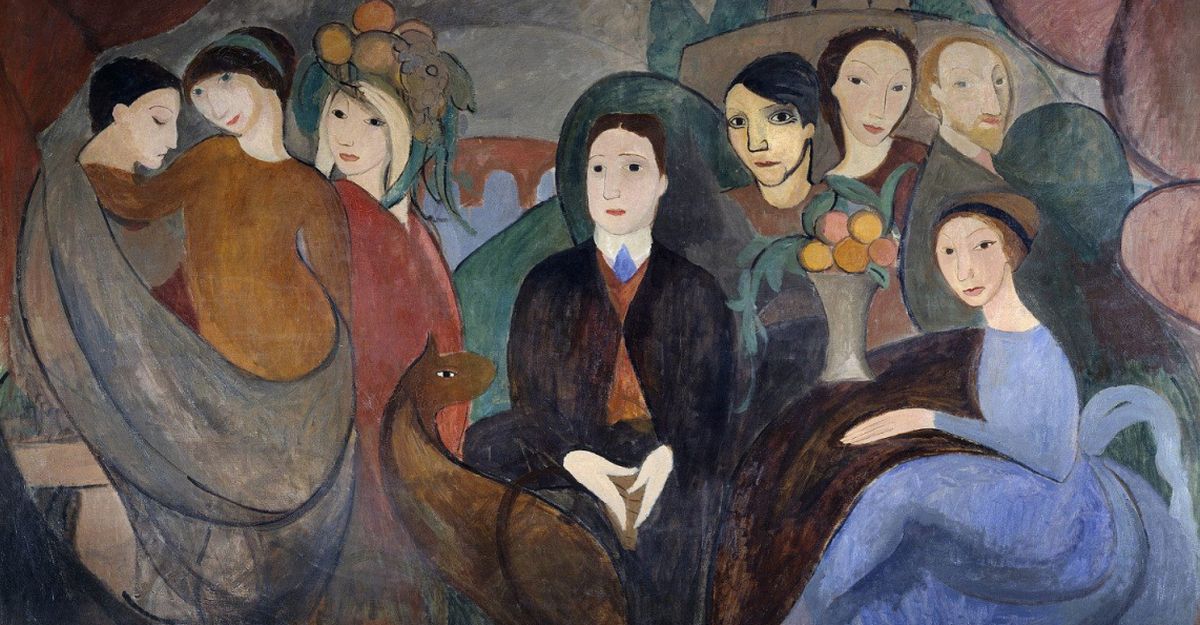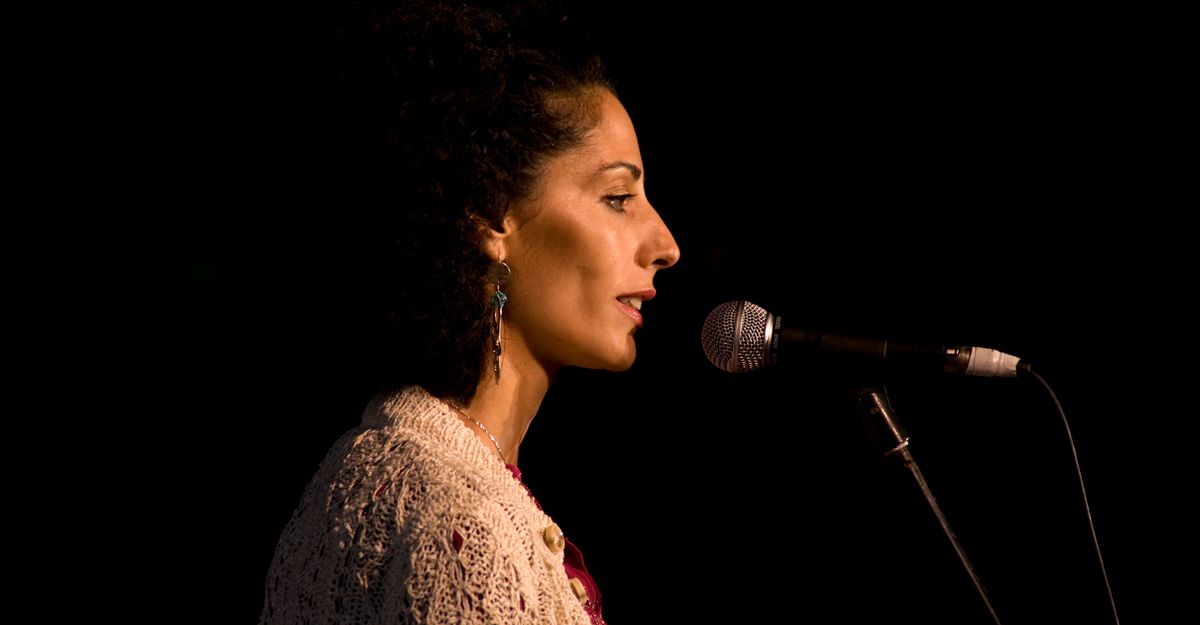Sometimes we can hear the echoes of Noongar ancestors, their voices speaking to us through the historical archive. We hear them in the hundreds of letters they wrote preserved in the archive from the mid-nineteenth century, their words asserting our collective humanity and human rights.
Some of these letters were written by parents pleading for the return of their children. These assertions of humanity, made more than a century ago, echo our current demands, as we continue to contend with contemporary practices of child removal. More than 36 per cent of children in care in Australia are Aboriginal; as the Uluru Statement declares, ‘this cannot be because we have no love for them’.
Here, I want to talk about the intersections between assertions of humanity within these letters and within the #IndigenousDads Twitter campaign from 2016. Whether these voices speak from the archive or new media, they echo each other and reveal to us centuries-old histories of advocacy for transformative discourses of humanity.
In July 2016, Four Corners aired ‘Australia’s Shame’, a report detailing shocking abuse of vulnerable Aboriginal children at the Don Dale Youth Detention Centre in the Northern Territory. The CCTV footage exposed systematic violations of the rights of children in detention, revealing that for some children in Australia, particularly those who are Aboriginal, life is not free from torture or cruel treatment.1
The rights of these children had been erased, with as much consequence as if they were mere words on a page – to echo the words of Aboriginal and Torres Strait Islander Social Justice Commissioner June Oscar’s Mabo Lecture from earlier this year: ‘for many of you, I know that human rights are just words on a page and not a part of your lived reality’. The footage from Don Dale recorded some of these acts of erasure; it also recorded some of these lived realities.
The UN High Commissioner for Human Rights condemned the treatment of Aboriginal children at Don Dale, stating that the abuse was potentially in violation of both the Convention on the Rights of the Child and the Convention against Torture and Other Cruel, Inhuman and Degrading Treatment or Punishment. In a statement to the media, then Aboriginal and Torres Strait Islander Social Justice Commissioner Mick Gooda said, ‘This is a hard day for me; it is a hard day for Aboriginal and Torres Strait Islander people, and it is a hard day for all Australians. It is not OK for this to happen to any child in this country, be they Aboriginal or non-Aboriginal.’
The abuse at Don Dale indicates serious disease in the culture and discourse of human rights in Australia. Then Australian Human Rights Commissioner, Professor Gillian Triggs, said, ‘We must now come to terms with a failure to address a problem that we all understood has existed for a long time.’
Within twenty-four hours of the screening of ‘Australia’s Shame’, then prime minister Malcolm Turnbull announced the Royal Commission into the Protection and Detention of Children in the NT.
On 4 August, less than a fortnight after the Four Corners story, The Australian published a controversial political cartoon by Bill Leak, in which a caricature of an Aboriginal father is depicted as not knowing the name of his own son. In the cartoon, an Aboriginal policeman is shown holding the boy by his collar and saying to the father, ‘You’ll have to sit down and talk to your son about personal responsibility.’
Undeniably inflammatory, the cartoon was described by various organisations as discriminatory and racist. ‘You feel quite oppressed when these things happen,’ said Muriel Bamblett, chief executive of the Victorian Aboriginal Child Care Agency. ‘I think that we every day have to battle with direct racism and indirect racism.’ The cartoon sparked a debate about responsible parenting that effectively corrupted the discourse around the humanity and human rights of Aboriginal people, and diverted our gaze away from the abuse at Don Dale.
In response to the resulting debate about personal responsibility and pathology, Aboriginal people began sharing positive stories about their fathers, often accompanied by powerful photographs, using the hashtag #IndigenousDads. Noongar woman Gina Williams wrote:
I wanted to honour the memory of my dad, Cyril Irwin Williams, because to me he represents the epitome of love and dignity and honour; things which we need to call upon when faced with hateful, hurtful things. I wanted to honour the memory of my dad because in my heart I know if you knew my dad then you could never draw something so horrible.
The campaign trended nationally, creating a vivid digital archive. Luke Pearson, founder of the IndigenousX media platform, said the cartoon caricatures Aboriginal people as ‘people who don’t subscribe to everyday rhythms of humanity’ – rhythms of loving and caring for children and responsible parenting. Yet, the emotions held within these heartfelt tweets move in time to ‘rhythms of humanity’. Pearson beautifully described the campaign as an assertion of ‘collective humanity’, noting that ‘efforts made by Aboriginal people to assert our humanity and our rights didn’t stop 200 years ago [at colonisation].’
My own research recognises histories of advocacy by Noongar people fighting for Indigenous rights in the early twentieth century. There are traces of this advocacy in the hundreds of letters preserved in archives.
The Don Dale controversy and the debates surrounding the Leak cartoon reverberate with my research about the many Noongar parents who wrote letters to AO Neville, Western Australia’s chief protector, pleading for the return of children who had been forcibly removed. The emotions held within these heartfelt letters are assertions of our collective humanity, in a similar way to the #IndigenousDads campaign.
Colonial assumptions about Indigenous nations and their peoples continue to pervade discourses about the humanity and human rights of Aboriginal people. As Irene Watson argues, ‘the colonial project continues to define and construct the Aboriginality of First Nations’. The Leak cartoon, with its shocking caricature of an Aboriginal father, is a compelling case study of how Aboriginality is defined and represented. Is this cartoon one of the many parts that make up the colonial project?
The powerful technologies of writing and printing continue to maintain and extend colonial assumptions about Indigenous land, nations and their peoples. Yet many Indigenous people have strategically adapted these technologies, using them to advocate transformative discourses of humanity – a challenging of the colonial state’s assumptions about Aboriginal people. #IndigenousDads is one contemporary example, but there are also archival traces that are contributing to emerging narratives of Indigenous political autonomy and its history.
These traces reveal how Indigenous people have dynamically engaged with transnational circulations of people, ideas and movements, and contributed to international discourses of human rights. Collectively, their writing – which began around a century before the 2007 United Nations Declaration on the Rights for Indigenous Peoples – represents the international history of an idea and movement.
These histories are living stories, passed down from one generation to the next. They hold an enduring legacy, and the voices of our old people become a call to action to our young people. We move in time to a rhythm that is not our own.
The Noongar letters I have been studying emerged out of a political context in which Indigenous rights were systematically violated through the Aborigines Act 1905. The Act exercised great controls and policing over the lives of Aboriginal people and their families. Under the Act, the chief protector was automatically granted custody over any Aboriginal person under the age of sixteen.
Many Noongar parents wrote letters to Neville, pleading for the return of their children. Some children even wrote to him, pleading to be returned home. These letters restore some humanity to the inhumanity of those periods, a time of stolen children and stolen futures.
One of these histories belongs to my grandmother’s grandfather, Edward Harris. He campaigned for more than a decade, between 1915 and 1926, for the return of his four children, Lyndon, Grace, Connie and my great-grandmother Olive. Harris corresponded with Neville on numerous occasions. Often his emotions linger in his words, or in the handwriting, or in other marks on the page.
Harris was able to meet all of the demands Neville placed on him in exchange for the return of his children: he could provide good character references; he had a stable job; he had a good home; he had a wife to take care of the children; he had money to send them to school. In a letter to Neville dated 31 December 1918, Harris writes: ‘I would like to mention the conditions under which they would be living would be the same as any ordinary working man’s home.’
Despite Harris meeting all of these demands, Neville refused to return the children. The decision had everything to do with the colour of Harris’ skin, and nothing to do with his ability to love and care for his children.
Harris’ later letters are heavy with anger, disappointment and betrayal. In one, dated 29 March 1919, he writes:
I can never convince myself that you are anxious for me to have my children back. I have told you before that you are hostile and biased, I still believe you are the same […] In all my dealings with you re the children you have raised too many obstacles and created too many difficulties, the result to me has always been disappointment. I have carried out all the conditions you have imposed on me, and I expect you to fulfil your promises re the children.
Harris was a family man; his advocacy was motivated by his love for his children. He wrote many letters. He demanded the repeal of the Aborigines Act. He held Neville to account for his abuses of power. In a letter dated 21 August 1920, Harris wrote:
[I]t would be a hard matter for you or anyone else to convince me that it is in the interests of the children that you are keeping them shut up at Carrolup. Your past actions show that you are malicious, you have never missed an opp[o]rtunity of hurting me. Not once. Also you have used your position as Protector and the Aboriginal Act to gratify your malice.
You speak of doing the best in the interests of my children. I cannot see it.
Harris’ letters contain a clear assertion of his human rights, as well as those of his children, and indeed of all Indigenous peoples. He also asserted his rights as a father. In a letter dated 1 February 1918, he writes:
And now before bringing this letter to a close I again appeal to you to have my children placed in my care, and to remind you that I am their father, and if you cannot do that, I’ll have to try some other means to have my children restored to me, either through the press or else a court of justice. [Emphasis added]
As well as his written advocacy, Harris requested a departmental inquiry into Neville’s refusal to return his children, and attempted to take his case to court (to no avail).
In 1926, Harris, along with his brother William and other Noongar families, established the Native Union, the first Aboriginal political organisation in Western Australia.
The Native Union gained national prominence when William led a deputation of Aboriginal people to meet with the Western Australian premier, Philip Collier, in 1928. The group of seven men included the Harris brothers, their nephew Norman, Wilfred Morrison, Edward Jacobs, Arthur Kickett and William Bodney. The men had shared a decades-long history of campaigning for the rights of their families and communities.
The 1928 deputation demanded the repeal of the Aborigines Act, in particular the state’s authority to forcibly remove Aboriginal children from their families. It also held Neville’s administration to account for its systematic violation of Indigenous human rights. The Western Mail reported that, during the meeting with the premier, ‘Mr Harris said, “The department established to protect us, is cleaning us up … Under the present Act, Mr Neville owns us body and soul”’.
Harris’ writing is not only a treasured family record of his love for his children and his unrelenting campaign for their return, but also a historical record of his persistent advocacy. By taking up pen and paper, Harris and other Indigenous activists of his generation were involved in fundamental work to advocate for transformative discourses of freedom, equality and humanity. My grandmother told me that her grandfather was a dignified man, one who believed that all people were equal, that he – as an Aboriginal man – was not lesser than any other person.
The emotions within his letters move in time to ‘everyday rhythms of humanity’. These rhythms reveal to us a loving and caring father. They reveal to us a responsible father, one who was willing and able to provide for his children. Harris’ unrelenting campaign for the return of his children restores some humanity to the inhumanity of their removal.
I wanted to create a space to talk about the intersections between the assertions of humanity within letters written by Noongar parents and those within the #IndigenousDads social media campaign. Studying the letters at the State Records Office in 2016 was an uncanny experience: I was listening to Aboriginal voices from the past at the same time as I was listening to Aboriginal voices speaking on Twitter. And they echoed one another.
Within colonial narratives of dispossession, Aboriginal people are voiceless; they are denied the agency to speak for themselves. Yet here Aboriginal people were speaking. Both times, and in both communication modes, the words represent a way of challenging the colonial state’s assumptions about Aboriginal people. They demand meaningful dialogue about the protection of vulnerable Aboriginal children.
Whether Aboriginal voices speak from the archive or new media, they reveal centuries-old histories of advocacy for transformative discourses of humanity – advocacy that liberates us from how we think and feel about each other. Our current demands echo those of our ancestors: Aboriginal people continue to contend with practices of colonisation; we move between the two worlds. These histories of advocacy revitalise colonial narratives of Indigenous dispossession by amplifying significant Aboriginal voices.
In 2017, over 250 Aboriginal and Torres Strait Islander people gathered to make the Uluru Statement from the Heart. One of its key recommendations was for a ‘First Nations Voice’ to be enshrined in the constitution, which would enable Aboriginal people to speak for themselves. The statement recognises that, ‘in 1967 we were counted, in 2017 we seek to be heard’.
The statement made these recommendations to ‘empower our people and take a rightful place in our own country’. This demand echoes the voices of our old people, who advocated for self-determination as ‘a rightful place in our own country’. The Aboriginal voices in these letters and tweets trace some of these histories of advocacy that have compelled us forward to the present.
Endnotes
1 The Australian Institute of Health and Wellbeing reported that Aboriginal children, between the ages of 10 and 17, accounted for 95 per cent of children in detention in the Northern Territory in 2015 (AIHW 2016, p. 2).
2 All excerpts of Edward Harris’ letters are taken from Harris family documents and have been reproduced with permission.
3 Excerpts of the letters within this essay may not be reproduced without the descendants’ permission.
Read the rest of Overland 233
If you enjoyed this piece, buy the issue




